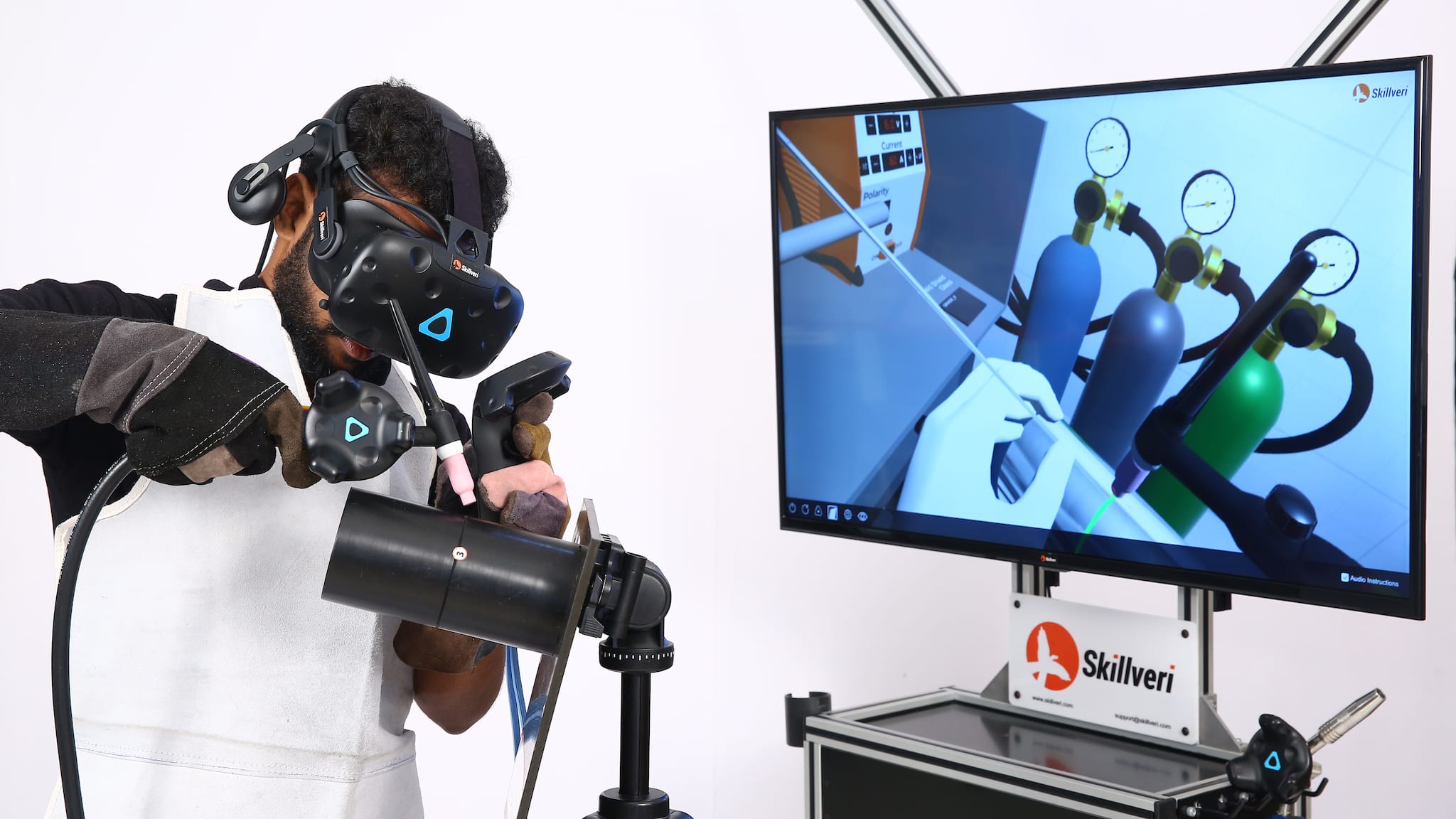



From employee learning to marketing, extended reality or XR is already making waves in India Inc. With its ever-evolving nature, the technology has now found its place in the auto industry helping the automotive industry impart training at lower costs and increased safety.
Currently, the auto industry is one of the major industries that heavily relies on the use of XR labs for training in the paint domain. Companies like CNH Industrial, TVS Motor Company, Tractors and Farm Equipment (TAFE) and Hyundai, among others, are using XR-VR to specifically train employees on dexterity, where skillful movement of hands is critical to the quality of output.
Extended reality, or XR, is an emerging realm of technology that combines real and virtual environments. The term is used to refer to human-machine interactions generated through wearables and computer technology. XR is categorised into three types namely AR (Augmented Reality), VR (Virtual Reality), and mixed reality (MR).
“When it comes to theoretical knowledge, e-learning and other methods are efficient. But for hands-on practical skills, XR simulators can not only train but also evaluate dexterity skills. This method has helped most customers to save an average 30-40 percent on rejections and rework-related costs,” said Sabarinath C Nair, CEO of metaverse skill training platform Skillveri.
How?
For automotive industries, the flexibility to pick and mix exactly the modules they apply is very useful. Among the four major types of welding, only one type is used in the auto industry. Among the four major types of painting, only two types are used in the auto industry.
So instead of buying one welding simulator with four types, and another painting simulator with four types, auto firms go in for a combination simulator having one type of welding and two types of painting.
ALSO READ | India Inc plans to scale up manager-less teams to reduce turnaround time
The other factor is the ability to simulate a conveyor belt on the shop floor for painting. It is economically impossible to have a conveyor system just for training purposes, and internal training centres usually train on stationary objects and not objects moving on a conveyor. “In XR, this can be simulated, saving crores of rupees in costs of stoppage of conveyor due to mistakes,” Nair said.
The simulation has different levels and a gamified pedagogy starting with simple basic levels and progressing to complex hard lessons that a trainee will unlock sequentially.
 An employee using the XR simulator
An employee using the XR simulator
For instance, TVS Motor Company employees start with specific fundamental skills which are very basically required to perform a job. These skills are taught in a static and dynamic mode based on a simulated work environment and cover safety, quality and delivery.
“In the painting domain after fundamental knowledge training, function-specific fundamental skills like part-loading and unloading, surface preparation, paint spraying, part inspection and graphics application are the skills provided,” said Rajesh. K, Head of LOM at the TVS Institute of Quality and Leadership.
Gauging progress
The XR is not just part of the safety module but a part of a larger strategy to improve productivity and output.
By using painting operator simulation training, TAFE was able to evaluate the painting skill more objectively and thereby identified the area of improvement on the actual part. For painting operators, the coverage, film thickness built and painting speed are critical parameters which a tractor manufacturer can improve with this training.
“Based on the skill rating, we depute the highly skilled operators for ‘A’ class painting,” said Guru Subramaniyan V, DGM-PED-Paint of TAFE.
Similarly, at the agricultural machinery company CNH Industrial, the focus is on skills such as optimum usage of paint, optimum thickness of paint and avoiding defects. Triggering paint guns at the correct moment, maintaining the correct distance from an object with the correct pattern and flow, and maintaining the correct angle are a few examples.
ALSO READ | With demand for metaverse talent set to rise, XR labs pop up in colleges
Currently, the company is planning to upscale metaverse-enabled training to other aspects of skill development such as welding and assembly. “Next in this industry may be the inclusion of AI-related techniques to make it more versatile,” said Punit Pandey, Process Owner and Paint Expert at CNH Industrial.
 An employee using the XR simulator
An employee using the XR simulator
Not without challenges
Moneycontrol earlier reported that there is, however, a dearth of skilled talent in the market for companies looking to develop these applications and a few engineering institutes are now setting up XR labs and offering courses to help students develop their skills and be industry-ready.
Experts believe that with the recent hype cycle, the metaverse was touted as the one-stop solution for all problems - this led to unrealistically high expectations followed by disappointments.
Secondly, technologies like XR-VR operate by fooling the senses into believing in a computer-generated world. If it is not built in the right manner, it could cause nausea or headache, said Skillveri’s Nair.
“Lastly, XR-AR-VR is at a stage similar to that of smartphones in the late 00s. There is a lot of scope and potential, and it will depend on proving value on the shop floor to become the de-facto method instead of being the exception,” he added.
Discover the latest Business News, Sensex, and Nifty updates. Obtain Personal Finance insights, tax queries, and expert opinions on Moneycontrol or download the Moneycontrol App to stay updated!